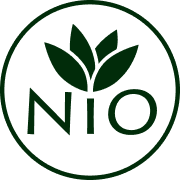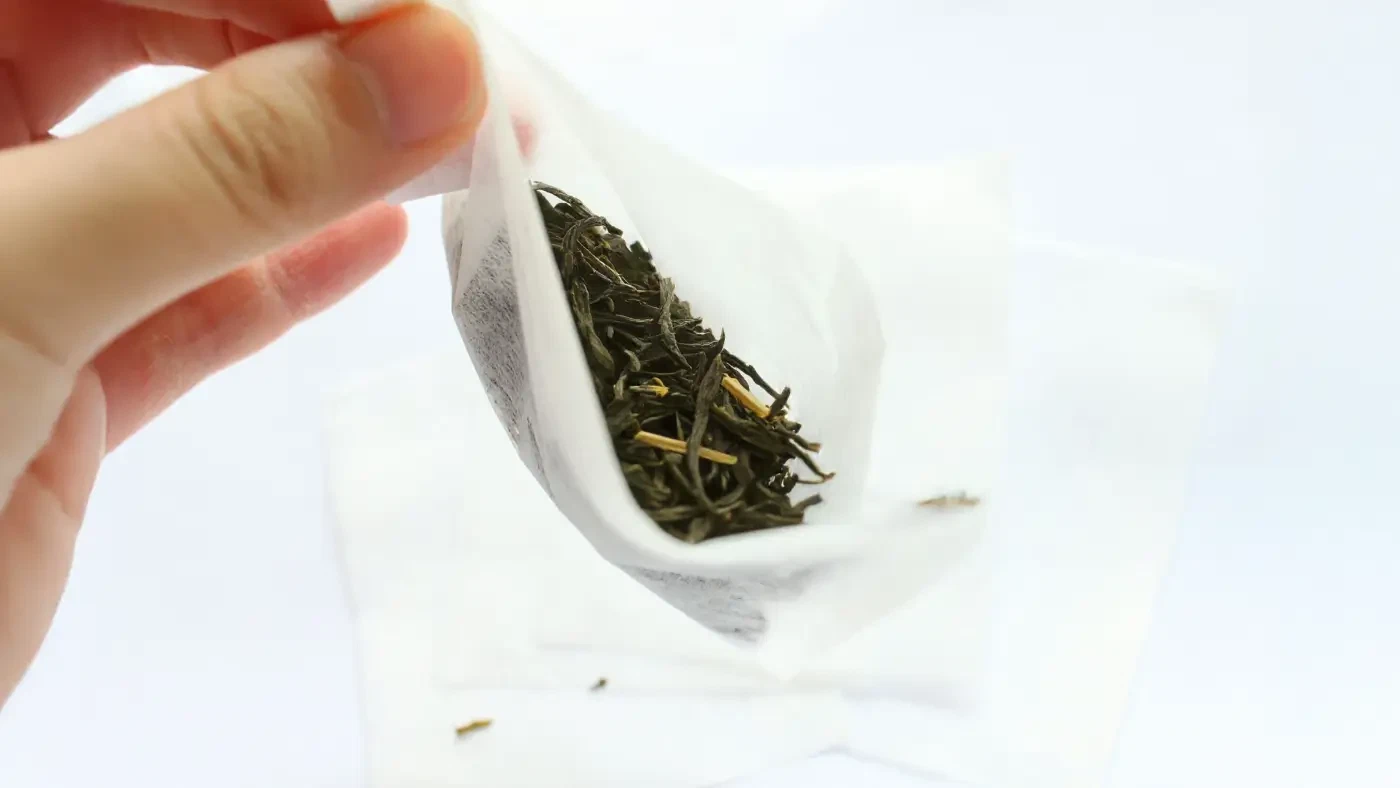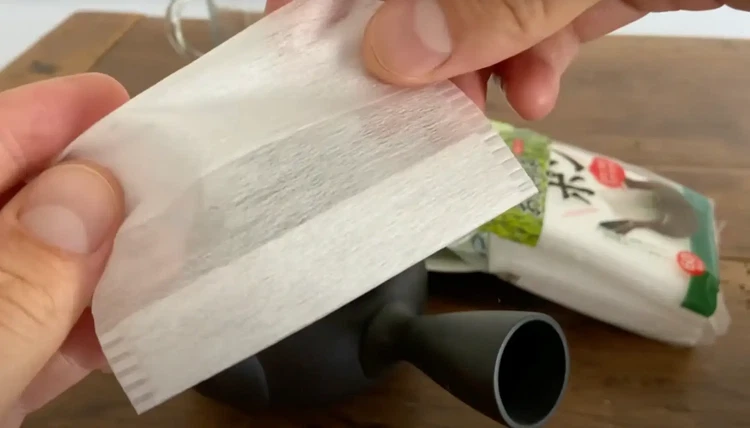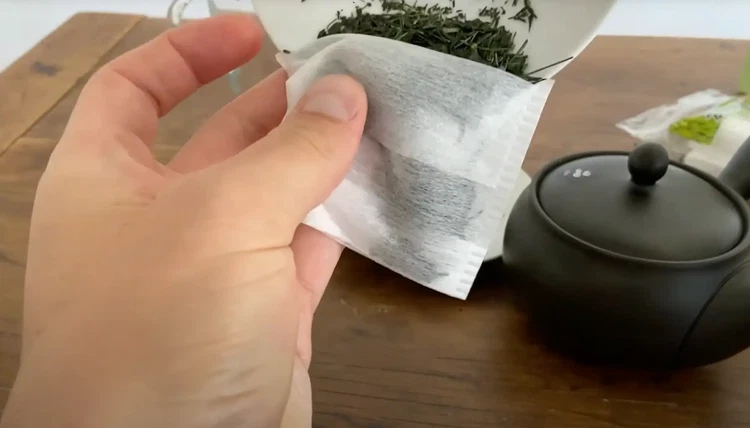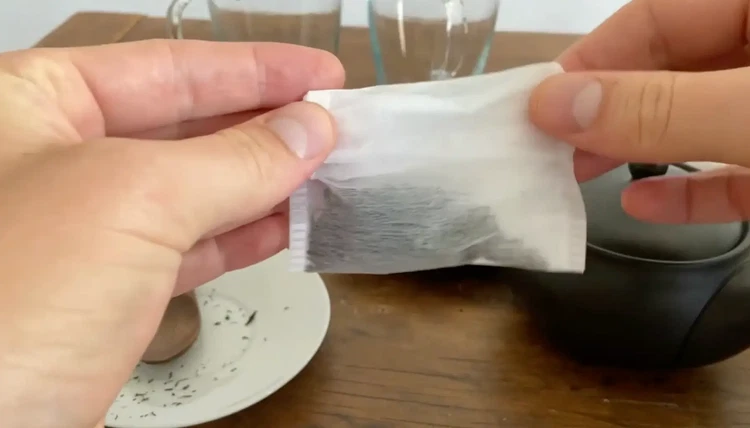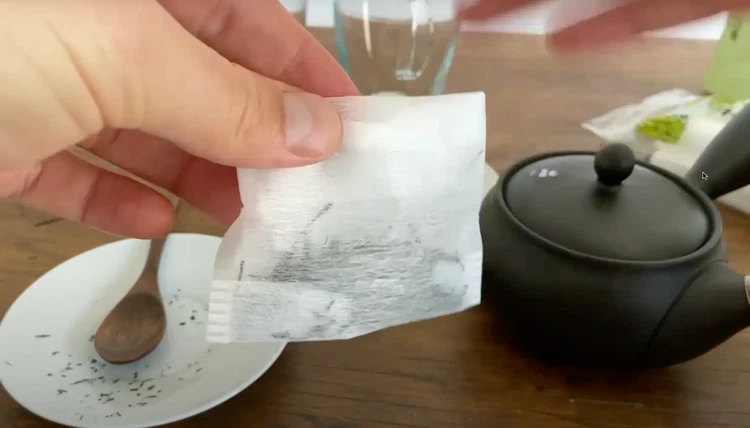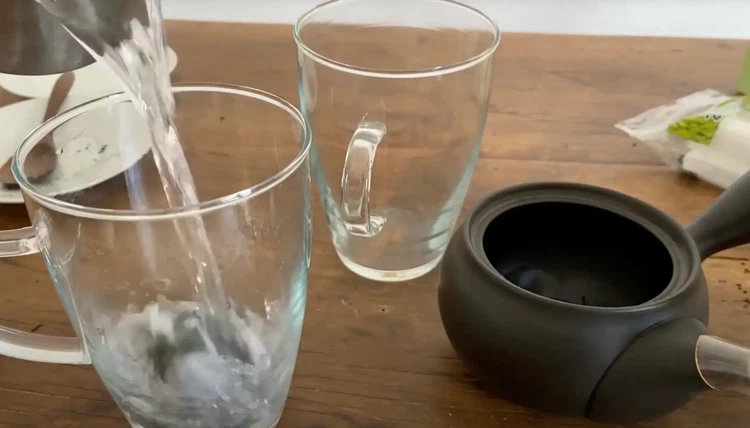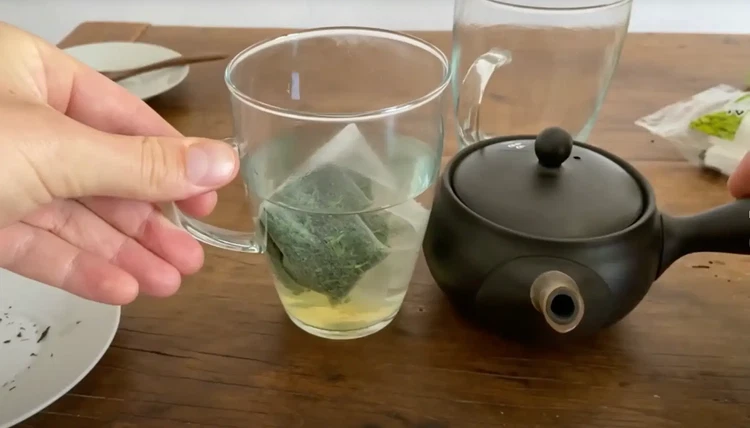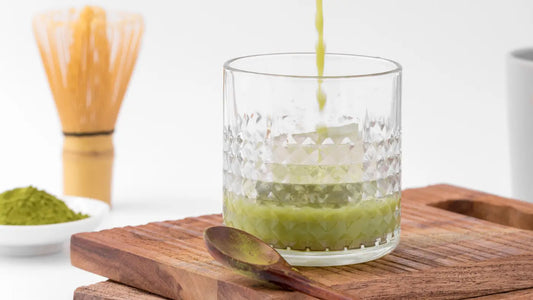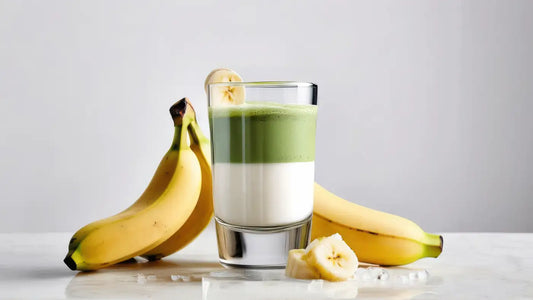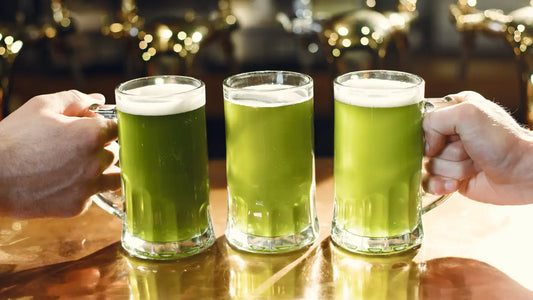You may come across gyokuro tea bags being sold online, but this tea is best enjoyed when prepared in a teapot. ❌
In this article, we’ll explore why loose leaf gyokuro is the superior choice, and at the very end, we’ll share a step-by-step recipe so you can make your own Gyokuro tea bags at home.
Without further ado, let’s dive into the world of Gyokuro tea bags. 🍵🍃
Gyokuro Tea Bags: Why You Should Make Them Yourself (Not Buy Them)
Why shouldn’t you buy gyokuro Tea bags? Teabags are perhaps the worst way to prepare green tea, and this is especially true in the case of gyokuro green tea bags.

Lock the Flavor, Ditch the Plastic
Like other types of Japanese green tea, Gyokuro tea goes through a rolling and drying process.
What makes Gyokuro unique is that it undergoes an additional rolling phase in a special type of rolling machine.
This really compresses the leaves into these tight, needle shapes. This rolling is meant to lock in the flavor so it can be released all at once when the leaves are rehydrated.
Because the leaves are so tightly rolled, they expand to many times their original size when they are added to water.
Because of this, gyokuro needs even more space than a typical green tea. This makes gyokuro tea bags not a good option for preparing tea. In the next sections, we’re going to talk about the taste difference between gyokuro tea bags and gyokuro prepared in loose leaf form.
Are commercial Gyokuro tea bags bad for you? Yes
When you buy gyokuro green tea bagged, you’re getting a lot of other ingredients with the leaves.
Most teabags are made from nylon, plastic or bleached paper. Many teabags are then also sealed with a type of glue.
On top of that, they are polluting a lot. When you ask the question, are teabags bad for you, you really need to take a look at the individual materials used to make each one.
That's why we advise you to make your own tea bags and recycle them!
We made a detailed article to answer this question. If you're interested in the topic, you can check out the article 👉 Are tea bags bad for you? Yes. Read this to learn why.
Difference of taste between Gyokuro in tea bags vs loose leaf

We have done a few side-by-side comparisons between gyokuro green tea bags and gyokuro in loose leaf form. We found that, for a number of reasons, the gyokuro in loose leaf form was far better than the gyokuro tea bags.
The most noticeable difference in the flavor is the complexity. When comparing the Gyokuro Sasa Hime, you get this pleasant floral note, a cooling sweetness and a rich umami finish. With the gyokuro tea bags, you get some of the sweetness but it feels faint and distant. The floral notes are completely lost and the umami can be found only with some imagination.
The downside of tea bags
In other words, you are only getting part of the experience when you use gyokuro tea bags. If you really want the full effect, you will have to drink the gyokuro tea in loose leaf form. Another downside to the gyokuro tea bags is that you get the flavor of the teabag itself. All the materials used to make teabags impart some flavor into the tea that can negatively impact the taste. Even the silk teabags that we use provide some disruption to the flavor.
We created a detailed analysis between the differences of loose leaf vs tea bag. If you are interested in our research, we invite you to read the article 👉 Loose leaf vs Tea bag - Everything You Need to Know.
Where can I buy Gyokuro to prepare my own Gyokuro tea bags?

If you are looking for some Gyokuro tea, we really recommend the Gyokuro made by Mr. Sakamoto in Shibushi. Mr. Sakamoto took over his family business in 1985 and he has been growing gyokuro without the use of pesticides or chemicals ever since. Despite not using these potent chemicals, he is able to produce healthy and flavorful gyokuro teas by using his own fertilizer. This allows him to create delicious gyokuro without harming the surrounding ecosystem.
The tea we used for these gyokuro tea bags is the Gyokuro Sasa Hime, which is made from a blend of different tea cultivars. You can also try the light and sweet Gyokuro Cha Meijin, the strong and savory Cha Musume or the smooth and vegetal Gyokuro Wakamusha.
Whatever Gyokuro you decide to choose, you’ll be able to enjoy great tasting tea on the go without the unpleasant flavors or microplastics.
